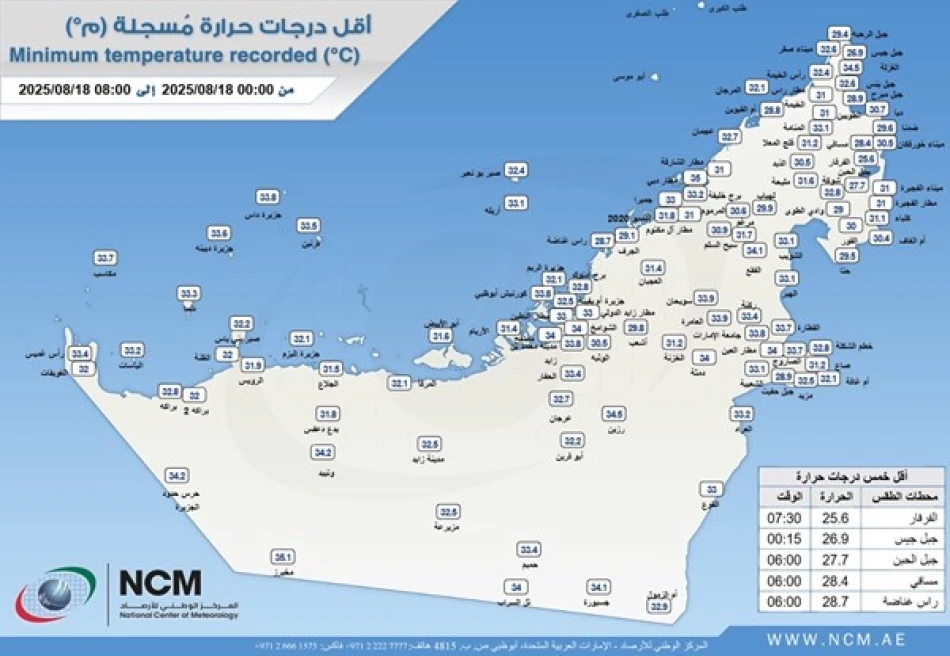
Fujairah's Jebel Jais Records UAE's Lowest Temperature
UAE Records Surprisingly High Minimum Temperature as Climate Patterns Shift
The UAE's lowest recorded temperature on Monday morning reached 25.6°C (78°F) in Fujairah's Al Farfar region, highlighting the country's consistently warm climate even during what are typically cooler morning hours. This temperature reading, recorded at 7:30 AM local time, underscores the Gulf nation's year-round heat patterns and raises questions about regional climate trends.
Morning Heat Reflects Regional Climate Reality
The National Center of Meteorology's temperature reading from Al Farfar in Fujairah emirate represents a baseline that would be considered warm in most global contexts. At nearly 26°C before 8 AM, the UAE continues to experience the intense heat characteristic of Arabian Peninsula weather patterns, even during traditionally cooler dawn hours.
Fujairah, located on the UAE's eastern coast along the Gulf of Oman, typically experiences slightly more moderate temperatures than interior desert regions due to its coastal position. The fact that this coastal area recorded the country's lowest temperature speaks to the pervasive heat affecting the entire nation.
Implications for Energy and Infrastructure
These consistently high minimum temperatures carry significant economic implications for the UAE's energy sector. With temperatures never dropping below the mid-20s Celsius, air conditioning demands remain elevated throughout 24-hour cycles, placing continuous strain on the national power grid.
The persistent heat also affects the country's ambitious sustainability goals. The UAE's commitment to net-zero emissions by 2050 faces additional challenges when cooling systems must operate around the clock, even during traditionally cooler morning and evening periods.
Regional Context and Climate Trends
Compared to neighboring Gulf states, the UAE's temperature patterns align with broader regional trends showing minimal daily temperature variation during peak summer months. Saudi Arabia, Qatar, and Kuwait report similar phenomena where minimum temperatures rarely provide significant relief from daytime heat.
This contrasts sharply with desert regions in other parts of the world, where nighttime temperatures can drop dramatically. The UAE's coastal geography and urban heat island effects from rapidly expanding cities contribute to maintaining elevated temperatures throughout daily cycles.
Looking Ahead: Infrastructure and Adaptation
The temperature data reinforces the critical importance of the UAE's investments in climate-resilient infrastructure and renewable energy sources. With minimum temperatures remaining in ranges that require active cooling, the country's solar energy initiatives become even more economically justified as a means to power extensive air conditioning networks sustainably.
For residents and businesses, these temperature patterns necessitate continued adaptation strategies, from building design that maximizes energy efficiency to scheduling outdoor activities during the brief windows when temperatures reach their daily minimums.
Most Viewed News

 Layla Al Mansoori
Layla Al Mansoori






